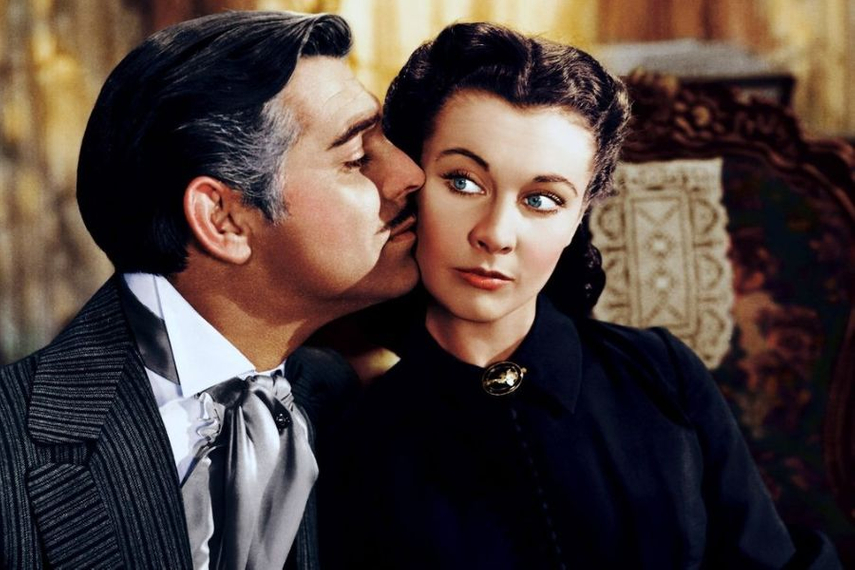
Can there be a true detachment in art? Can a work of art be created by a painter or a writer or a film maker in a truly detached manner? Can (or should) artists separate themselves from the world they reflect about?
Consider the case of a writer, for example. His medium is words.
Now, words have meanings, and with those meanings, emotional associations. Despite all cynical doubts, it is very difficult for a writer not to say something whenever he assembles his words, and he likewise cannot avoid stirring up, in some measure, the emotions of his readers.
But so far as he does these things, he is intimately bound to life and to the world around him. He could be completely detached only if he treated words as meaningless sounds, and in such a way that they also do not suggest any meaning through the very absence of meaning. This technique was attempted by Miss Gertrude Stein, the 20th century American novelist, poet, and playwright, but it cannot be said to have caught on.
Life’s inescapable ties
A painter has a wider area in which to practice detachment. He does not have to represent on canvas the forms and movements of ordinary life. He may, if he likes, paint ‘non -objectively’; that is to say, he can assemble colours into patterns of his own choosing without any resemblance to objects as they are seen. There can be no objections to this procedure so long as it remains one among many possible choices for painters to make.
For instance, we do not require literal representation upon rugs or drapery, and there seems to be no reason why we should specifically require it for painting. Yet, even here, if complete detachment were to be attained, the painter would have to annul any possible suggestion which might lie in the painting’s emotional appeal.
The late 19th and early 20th century Russian painter Wassily Kandinsky, for example, copied nothing; but the magnificence of his composition suggests harmony and movement, which, in turn, can suggest other concepts to the very boundary of an observer’s thought.
Let’s take the example of a composer. At first sight, a composer seems more detached from life than any other artist. Unlike the writer, he actually does deal with sounds that have no fixed meanings. Yet, he is bound to life by emotional association fully as much as writers are. No one can take the 19th century Russian composer Pyotr Ilyich Tchaikovsky to have been an optimist.
Similarly, no one can imagine the 18th and 19th century German composer and pianist Ludwig van Beethoven to have been a man of small ideas. For his part, the old giant still maintained that in every work he expressed some portion of his philosophy. The apparent meaninglessness of musical composition is, in fact, an invitation to listeners to supply it with meanings as their minds roam free. Probably, the only way to cancel all possible meanings would be to make the work so dull that it offers no such invitation.
It seems unlikely, then, that there can be many works of art that have no reference to life and the problems of living. For most artists, it must remain inseparably difficult to negate the very humanity, which is the source of their own skills. Try as one may to empty art of content, there will remain some hint, some whisper, which shall set in motion the minds of other men.
The mass audience factor
These are limited examples, and we need a larger view. It seems to be a fact that the more a work of art is directed to mass audience, the greater the amount of surreptitious comment it contains.
The best selling novels present themselves as pure narratives, that is to say, as chronicles of speedy and titillating events (pun intended), without the least commentary. Yet the sufferings of Scarlett O’hara, the protagonist of Margaret Mitchell’s 1936 novel, Gone with the Wind, and its 1939 film adaptation, almost persuade us to love those wayward and exquisite slave owners who refuse to pass peacefully out of power. Even for reactionaries, grief over a lost tyranny is a waste of tears.

A more humble art form is the comic strip, but the public which it reaches is now so enormous that one can exclude oneself from it only by a violent exercise of will. In my boyhood, comic strips contained one joke per day, with no attempt at continuity. Even then, however, RK Laxman’s column ‘The Common Man’ was a spirited expression of democratic revolt against parvenus and aristocrats. I do not know whether Laxman drew all this consciously, but I acknowledge that I am in his debt.
The superhero character Superman, created by the writer Jerry Siegel and the cartoonist Joe Shuster from the United States of America in the early 20th century, clearly compensates for the vulnerability of common man with his incredible powers, as we are told, ‘he is not a bird or a plane’. We, as readers, thwarted on every side by a social system which we do not control, find pleasure in the imaginary existence of a man whose powers are limitless and whose purposes sublime.
Unfortunately, he acts as a substitute—not as an inspiration. He leads us to rely on external intervention and to forget how massive our strength can be, if we but organise it. Superman, I am afraid, is founded upon a retrograde social theory. At any rate, it is certainly not a mere narrative.
The greatest of all mass arts is the cinema, and nowhere else does the belief more ardently prevail that entertainment is the goal, not propaganda. Entertainment has acquired the power of a shibboleth. It appears to mean, primarily, escape from tedium or anxiety, from ugliness or defeat.
It salso means the sublimation of frustrated desire, as when the screen exhibits rooms we would like to live in but cannot, or men or women we would like to love but cannot. It perhaps means temporarily holding attention and letting a few moments slip by.
Rarity of detachment
When, therefore, we survey the entire realm of art, we cannot fail to observe how rare and how difficult genuine detachment from life is. Try as we may, an artist will seldom contrive to be absolutely speechless. He is almost certain to say something about something. When he does this, he comments; and when he comments it will take an analytical genius to decide whether or not he has committed propaganda.
Thus, the belief that art and politics are incompatible is inseparable from its social uses. The primary purpose is to silence and disarm. Everyone knows that ideas, when transmitted in the excitement of aesthetic experience, have a powerful effect on the mind. Not only are they then more readily accepted but are also more readily acted upon.
While democracy persists, it is difficult to prevent such works by the use of government machinery. Suppression must be subtler. There can be no repression more subtle and at the same time more effective than to persuade novelists, playwrights and painters that their true vocation lies elsewhere. Once social themes are abandoned by the very men who could most passionately treat them, little needs to be feared from the imperfect performers who remain.
The primary use, is thus, preventive. A secondary use, though valuable, is a weapon of attack against those works which, despite all cajolery and enticement, continue to plead the hopes of mankind.
To say that these are ‘propaganda and not art’ is to say that the creator either has no knowledge of his craft or has sacrificed it to purposes beyond his legitimate reach. In this manner the novel is made to lose its readers, the play its audiences, and the painting its spectators. The superstition achieves all this without once hinting that the real objective of attack was not the work itself but the social ideas it contained.
If, lastly, the superstition, having fully concealed its origin and purpose, sets up as an independent aesthetic theory, it will have an almost limitless capacity for harm. Creative genius, the mightiest of human faculties, must then confess itself like a Biblical character the shorn Samson, and humbly put its body to the wheel. Betrayed by a faithless Delilah and blinded by shrewd Philistines, it will have neither the thought nor the wish to pull down temples. So, while the assassin steals close, the dagger is lifted; but the victim murmurs, ‘I am an artist; I have no comment to make.’

— Nikhil Sharda, assistant vice president – marketing, The Marcom Avenue.


.jpg&h=334&w=500&q=100&v=20250320&c=1)
.jpg&h=334&w=500&q=100&v=20250320&c=1)


.jpg&h=334&w=500&q=100&v=20250320&c=1)


.jpg&h=334&w=500&q=100&v=20250320&c=1)

.jpg&h=334&w=500&q=100&v=20250320&c=1)




